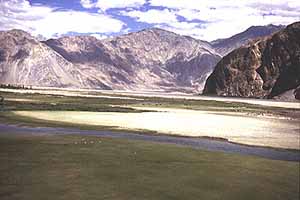|
|
 |
Baltistan
|
|
 |
Nestled in this region is the greatest concentration of lofty peaks on Earth. Within this area of 26,000 square kilometres, lie 60 mountain peaks above 7000 meters, four of which tower above 8000 meters: K-2 (8611m), Gasherbrum I (8068m), Broad Peak (8047m) and Gasherbrum II (8035m). Bordered to the north by the Sinkiang province of China, to the east by Ladakh, to the south by Kashmir and to the west by Gilgit-Hunza, Baltistan has been largely ignored by most invaders, conquerors and explorers. Very little is known of the origins of the inhabitants, but the architecture, the features of the indigenous population and the similarity of the modern-day Balti language to archaic Tibetan has earned their abode the nickname of "Little Tibet".
Mentioned first by the Chinese in the 8th century, this region remained predominantly Buddhist until the 15th century, when most of the locals converted to Islam. In the mid-19th century the Maharajas of Kashmir conquered and annexed Baltistan, and it remained part of Kashmir until 1947, when the local Baltis fought to join Pakistan. The capital of Baltistan is Skardu, strategically placed near the confluence of the Indus and Shigar Rivers. At an altitude of 2300 meters, Skardu is surrounded by sharp peaks in breathtaking hues of ochre, grey, violet and black. Apart from the wheat and corn fields alongside the river banks, the regions a desert. The consequent juxtaposition of sand dunes with green and yellow fields bifurcated by the swirling, roaring Indus, all amidst a backdrop of ragged, snow-capped peaks, is a sight defying imagination. This truly is, in Fosco Mariani's words, "The world's greatest museum of shape and form."
![]()